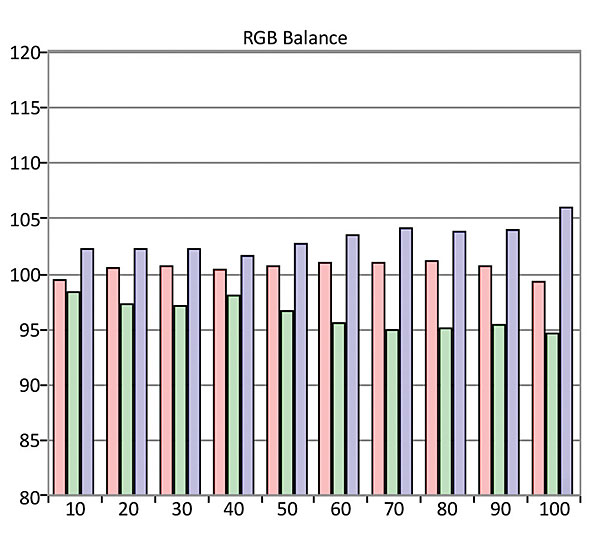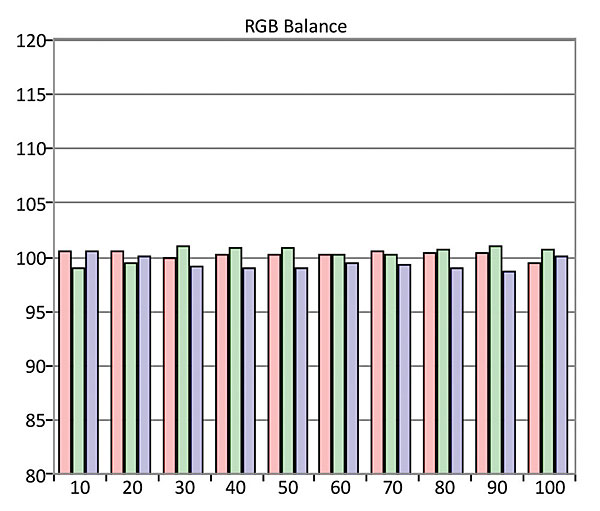Epson Home Cinema LS100 LCD Projector and Elite Screens Aeon CLR Screen Review Test Bench
Full-On/Full-Off Contrast Ratio: 1,030:1
Pre-calibration measurements were made with the Epson’s Cinema preset active. Post- calibration measurements were made in the same mode. All measurements were made using the Elite Screens Aeon CLR screen.


The projector’s highest contrast ratio in the Cinema preset was achieved with its Quiet Light Control mode selected and its Dynamic Contrast feature set to High Speed. With this combination, black level measured 0.022 ft-L and peak white 22.68 ft-L, for a contrast ratio of 1,030:1. Contrast ratio in Cinema preset with the Dynamic Contrast turned off was 200:1. Maximum light output was measured at 70.32 ft-L with contrast set to 100 in the projector’s Dynamic preset mode, with Normal brightness selected.
Before calibration, the Epson’s default color temperature preset in the Cinema preset displayed somewhat below-average tracking, with the Delta E averaging out to 4.3. Calibration in the User mode improved that average to 1.1, with a high of 1.6 at 30% brightness. (Delta E is a figure of merit that indicates how closely a display adheres to the Rec. 709 HD color standard. Experts generally agree that levels below 3 are visibly indistinguishable from perfect color tracking.)
With the Cinema mode’s default settings active, the Epson’s mea- sured color points were some- what inaccurate, with the Delta E averaging 7.0. Post-calibration, the Delta E for color points improved slightly, averaging 5.8.
With the 1 Gamma preset selected, the Delta E for gamma in the Cinema mode averaged 6.2. Post-calibration, gamma improved substantially, closely tracking the 2.2 target for most of its range, with a high of 2.1 at 90 IRE.

Picture uniformity on the Epson was mostly good: White full-field test patterns showed some brightness drops between the center and edges of the screen, but color shifts were minimal. (Our measurements for color and brightness uniformity in different screen sectors, available at soundandvision.com, indicated that performance was mostly consistent between the Elite and Screen Innovations screens used, though the SI model had better brightness uniformity.) The projector also had very good brightness uniformity when the picture was viewed off axis. A degree of light spray could be seen when viewing in dark room conditions. Our suite of video processing tests revealed mostly good performance, with the Epson only tripping up on HD and SD 2:2 pulldown patterns, a not uncommon result.—AG




























































